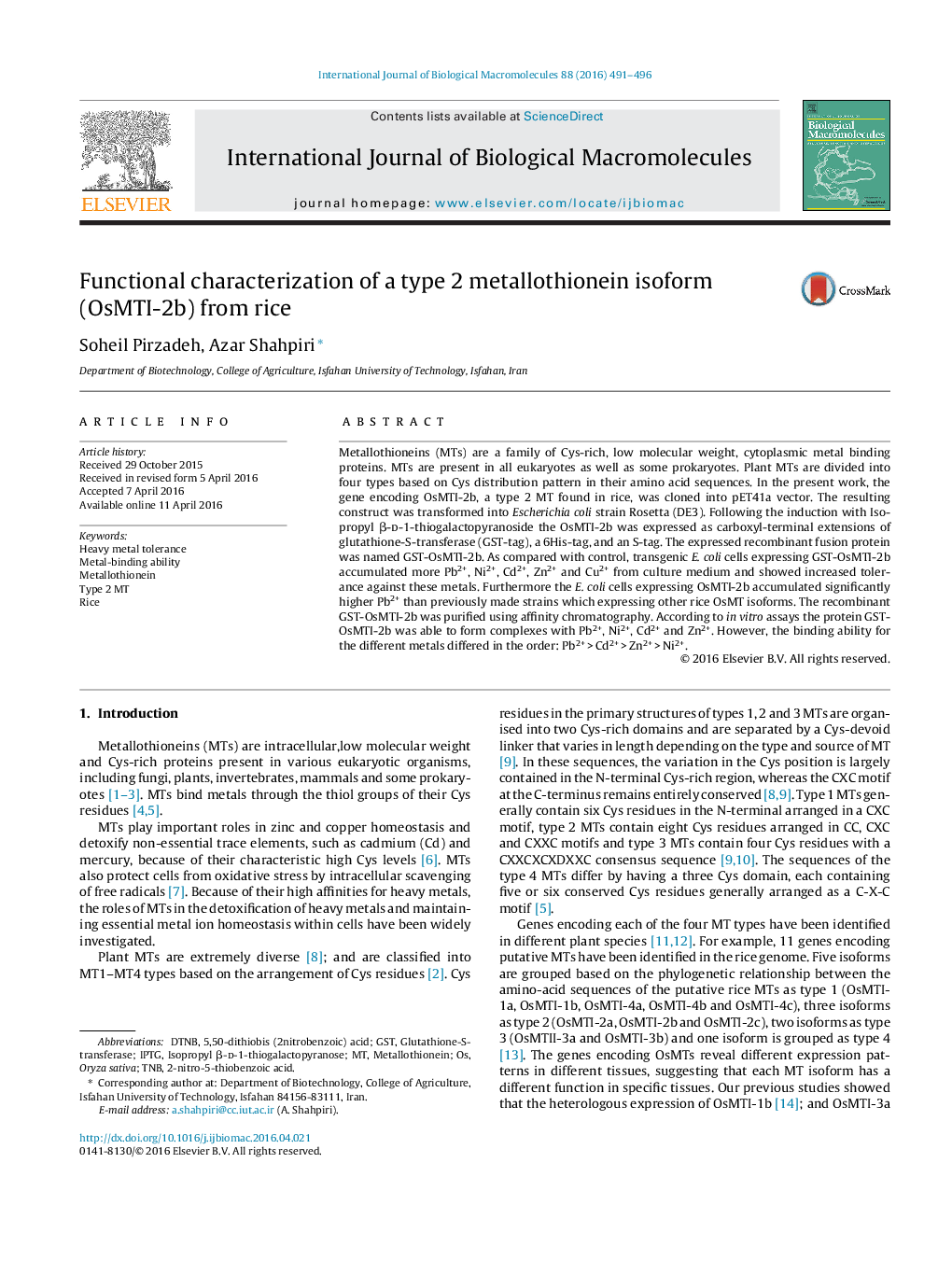| کد مقاله | کد نشریه | سال انتشار | مقاله انگلیسی | نسخه تمام متن |
|---|---|---|---|---|
| 1986147 | 1540232 | 2016 | 6 صفحه PDF | دانلود رایگان |

• A type 2 metallothionein isoform (OsMTI-2b) was heterologously expressed in E. coli.
• The cells expressing OsMTI-2b were able to remove Pb2+, Ni2+, Cd2+, Zn2+ and Cu2+ from culture medium.
• The protein OsMTI-2b was able to bind metals in vitro as confirmed by DTNB assay.
• The binding ability for the different metals differed in the order: Pb2+ > Cd2+ > Zn2+ > Ni2+.
• Expression of OsMTI-2b in E. coli resulted in significantly higher Pb2+ accumulation.
Metallothioneins (MTs) are a family of Cys-rich, low molecular weight, cytoplasmic metal binding proteins. MTs are present in all eukaryotes as well as some prokaryotes. Plant MTs are divided into four types based on Cys distribution pattern in their amino acid sequences. In the present work, the gene encoding OsMTI-2b, a type 2 MT found in rice, was cloned into pET41a vector. The resulting construct was transformed into Escherichia coli strain Rosetta (DE3). Following the induction with Isopropyl β-d-1-thiogalactopyranoside the OsMTI-2b was expressed as carboxyl-terminal extensions of glutathione-S-transferase (GST-tag), a 6His-tag, and an S-tag. The expressed recombinant fusion protein was named GST-OsMTI-2b. As compared with control, transgenic E. coli cells expressing GST-OsMTI-2b accumulated more Pb2+, Ni2+, Cd2+, Zn2+ and Cu2+ from culture medium and showed increased tolerance against these metals. Furthermore the E. coli cells expressing OsMTI-2b accumulated significantly higher Pb2+ than previously made strains which expressing other rice OsMT isoforms. The recombinant GST-OsMTI-2b was purified using affinity chromatography. According to in vitro assays the protein GST-OsMTI-2b was able to form complexes with Pb2+, Ni2+, Cd2+ and Zn2+. However, the binding ability for the different metals differed in the order: Pb2+ > Cd2+ > Zn2+ > Ni2+.
Journal: International Journal of Biological Macromolecules - Volume 88, July 2016, Pages 491–496